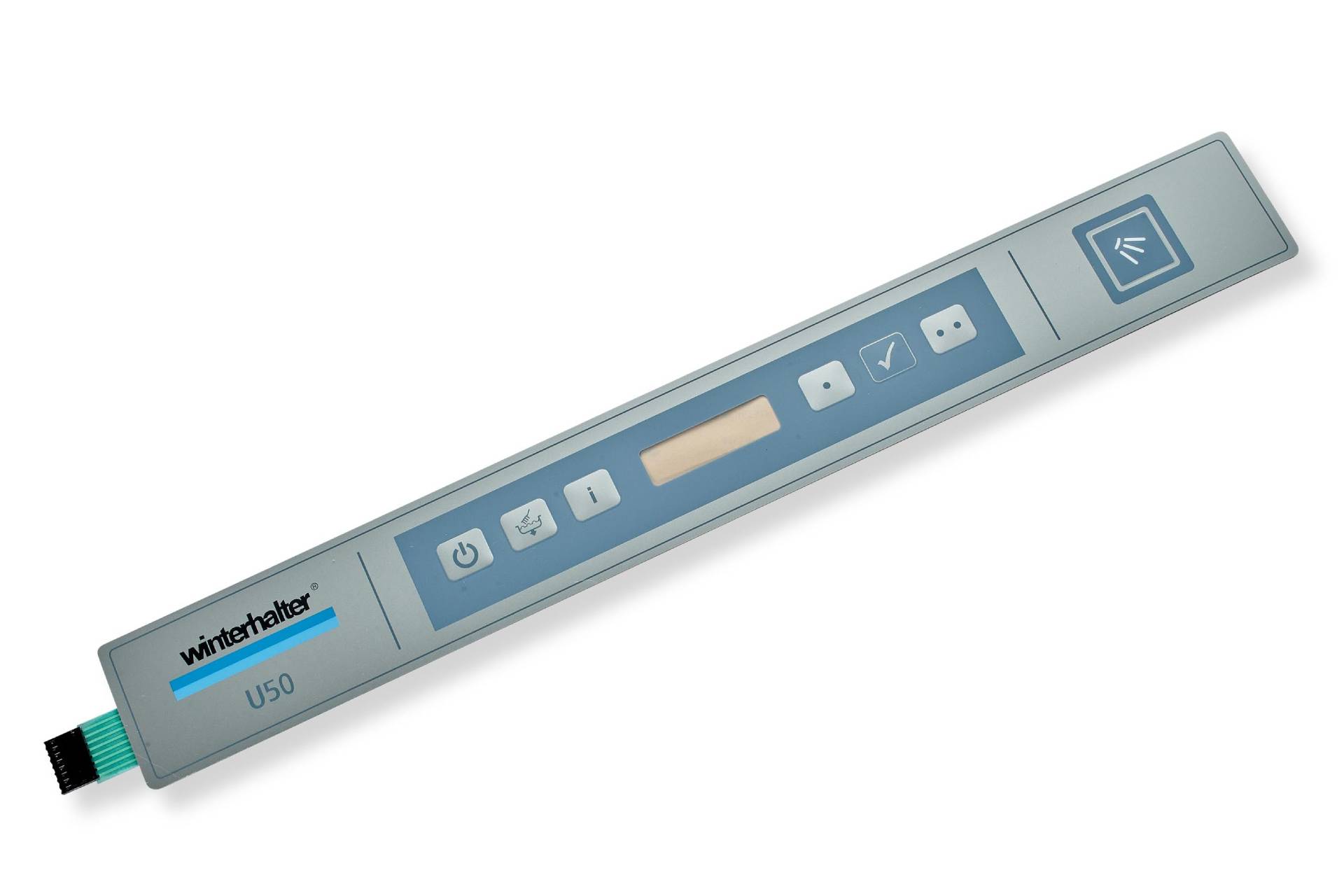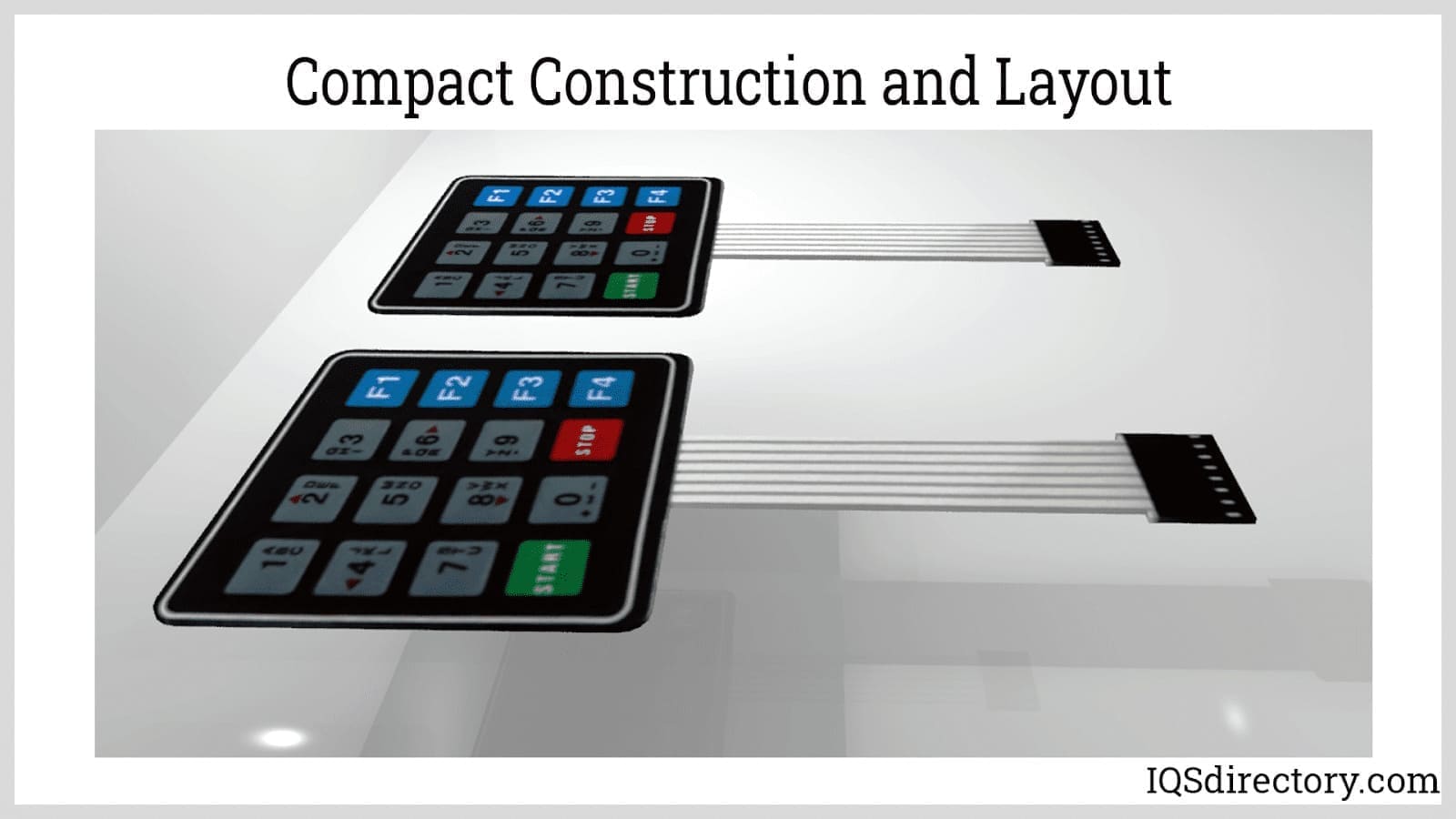Why is membrane switch a preferred choice in automotive dashboards?
Everything About Membrane layer Change: A Comprehensive Overview for Beginners
Membrane switches are important elements in contemporary electronic devices, providing a distinct interface for user communication - membrane switch. Their layered building, consisting of overlays and conductive traces, gives functionality and longevity. Unlike typical mechanical switches, membrane layer buttons provide a streamlined design and personalized choices. Comprehending their crucial features and benefits can transform item design. However, the ins and outs of their application and layout factors to consider necessitate additional exploration
What Is a Membrane layer Switch?
A membrane layer button is a sort of electric switch that includes a flexible membrane layer layered over a printed circuit board. This style permits a smooth and compact user interface, usually made use of in numerous digital devices. Membrane layer buttons are commonly discovered in customer devices, clinical devices, and commercial equipment because of their toughness and resistance to environmental factors.The building usually includes numerous layers, such as visuals overlays and sticky support, which offer responsive feedback and safeguard the circuitry below. The operation of a membrane switch is started when stress is related to the surface, completing an electrical circuit.These switches are valued for their flexibility, allowing customized layouts and published graphics that accommodate certain interface. Their low-profile nature reduces space needs, making them optimal for applications where typical switches may not fit. Overall, membrane layer switches provide a practical and aesthetic service for modern electronic tools.
Key Components of Membrane Switches Over
Membrane layer changes make up a number of key components that add to their performance and efficiency. The top layer, recognized as the overlay, gives the interface and is commonly published with symbols or graphics. Below the overlay lies a spacer layer, which divides the conductive aspects and avoids unintentional activation. The following important component is the visuals layer, which improves visual appeals and guarantees the longevity of the design.Conductive traces, commonly made from materials like silver or carbon, are published on the circuit layer. When pressure is put on the overlay, these traces enter into contact, finishing the circuit. In addition, a support layer uses structural assistance and can be made from materials such as polyester or polycarbonate. With each other, these elements develop a trusted, easy to use interface ideal for various applications, from house appliances to industrial tools. Comprehending these components is vital for anyone interested in membrane layer switch modern technology.
Exactly How Membrane Switches Over Work
Comprehending how membrane changes feature is vital for valuing their widespread use in numerous devices. A membrane button runs via a series of layers, consisting of a visuals overlay, spacer, and a circuit layer. When pressure is applied to the overlay, it compresses the spacer layer, enabling the circuit layer to make call and complete an electrical circuit. This action sends a signal to the gadget, motivating an action, such as switching on a light or activating a function.Membrane changes can be created with different features, including responsive responses, backlighting, and custom graphics, improving user interaction. Their building enables a covered design, securing the inner parts from dust, moisture, and impurities. This durability makes them appropriate for diverse applications, from customer electronic devices to commercial tools. Overall, the simplicity and effectiveness of membrane layer changes add to their popularity in contemporary technology.
Advantages of Membrane Layer Switches Over Over Mechanical Buttons
While mechanical buttons have long been a staple in many devices, membrane layer switches over deal distinctive benefits that make them significantly appealing. One substantial benefit is their slim account, permitting more compact layouts and better adaptability in item advancement. Furthermore, membrane layer switches attribute a consistent surface, which enhances visual charm and simplifies cleansing, making them ideal for atmospheres where health is critical.Another benefit is their resistance to dirt and wetness. Unlike mechanical switches, which can be jeopardized by ecological elements, membrane buttons supply a covered user interface that secures against impurities - membrane switch. Membrane switches typically have a longer life-span due to fewer relocating parts, resulting in enhanced durability and reliability.Cost-effectiveness is additionally a noteworthy advantage, as membrane switches can be created in mass with lower production expenses. These elements incorporate to position membrane buttons as a functional alternative to typical mechanical options in different applications
Common Applications of Membrane Layer Switches
Membrane buttons are widely made use of in different fields, particularly in consumer electronic devices and industrial control board. In consumer tools, they give a streamlined, straightforward interface, while in industrial setups, they enhance longevity and functionality. Comprehending these applications highlights the adaptability and practicality of membrane switches in contemporary innovation.
Consumer Electronic Devices Instruments
As customer electronic devices continue to develop, membrane layer buttons have actually become a preferred selection for a variety of gadgets due to their flexibility and sleek style. These buttons are generally located in smart devices, tablets, and remotes, where room is minimal and aesthetic appeals issue. Their reduced account and personalized layouts permit suppliers click for source to create user-friendly interfaces that enhance the overall customer experience. In addition, membrane layer buttons are often utilized in appliances such as microwaves and coffee machine, providing instinctive control options while withstanding wetness and dirt. The resilience and reliability of membrane switches over make them suitable for everyday consumer items, guaranteeing long life and consistent efficiency. Overall, their combination in customer electronics shows a blend of capability and modern layout.
Industrial Control Panels
The applications of membrane layer changes expand past customer electronics, locating considerable use in industrial control panels. These switches are favored for their sturdiness and resistance to harsh environments, making them ideal for producing and process control settings. They provide a reliable user interface for drivers to control machinery, monitor procedures, and change settings. Membrane layer buttons can be customized to fit details operational needs, incorporating attributes like backlighting and responsive comments, boosting individual experience. Their low-profile style permits combination right into different devices, while their capacity to hold up against spills, dust, and extreme temperature levels assurances long life. In general, membrane buttons add to risk-free and reliable operation in commercial applications, demonstrating their convenience and effectiveness sought after environments.
Factors To Consider for Designing Membrane Switches
When developing membrane layer buttons, picking the ideal materials is important to ensure durability and performance. Additionally, recognizing layer arrangement strategies can significantly influence the button's efficiency and customer experience. These factors to consider play an essential function in developing trusted and effective membrane switch layouts.
Product Choice Importance
Material selection plays an essential function in the style and functionality of membrane layer switches. The picked products straight impact the button's toughness, tactile action, and total aesthetic. Secret considerations consist of the substratum, which must supply structural integrity while enabling versatility, and the graphic overlay, which requires to be immune to wear and ecological aspects. Conductive products need to guarantee reputable electrical performance, while adhesives need to supply strong bonding without endangering the switch's operation. In addition, compatibility with manufacturing procedures and end-user environments is crucial; products should hold up against varying temperatures, humidity degrees, and chemical direct exposure. Inevitably, proper material option not just improves the membrane layer switch's efficiency however additionally adds to its durability and user satisfaction, making it an important element of the style process.

Layer Setup Methods

Often Asked Inquiries
How Much Time Do Membrane Layer Switches Commonly Last?
Membrane buttons generally have a life expectancy of 1 to 5 million cycles, relying on use and ecological problems. Factors such as layout top quality and operating frequency substantially influence their resilience and total visit the website efficiency longevity.

Can Membrane Changes Be Customized for Particular Layouts?
Membrane layer switches can indeed be personalized to fit specific layouts, permitting varied shapes, colors, and functionalities. This flexibility enables manufacturers to customize these switches to meet distinct aesthetic and functional demands successfully.
What Materials Are Used in Membrane Switch Building And Construction?
Membrane buttons are typically created utilizing products such as polyester, polycarbonate, and sticky layers. These materials supply versatility, resistance, and toughness to environmental aspects, guaranteeing the buttons operate efficiently in numerous applications and conditions.
Are Membrane Changes Water-proof or Resistant to Moisture?
Membrane buttons can be made to be moisture-resistant, utilizing specialized materials and finishes. Nonetheless, their waterproof capabilities depend upon construction high quality and particular applications, making it crucial to assess demands for ideal performance in various environments.
Exactly How Are Membrane Changes Repaired if Damaged?
Repairing damaged membrane switches over typically entails changing the impacted layer or circuit. Specialists might likewise apply conductive adhesive or make use of specialized repair work kits, ensuring functionality is recovered without full substitute of the whole switch assembly. Unlike traditional mechanical buttons, membrane switches present a streamlined redirected here layout and adjustable options. A membrane layer button is a kind of electrical switch that is composed of a versatile membrane layered over a published circuit board. The procedure of a membrane button is launched when pressure is used to the surface area, completing an electric circuit.These switches are valued for their convenience, allowing customized styles and printed graphics that provide to certain user interfaces. While mechanical buttons have long been a staple in many tools, membrane switches offer distinct benefits that make them significantly appealing. Membrane buttons typically have a longer lifespan due to less moving parts, resulting in improved sturdiness and reliability.Cost-effectiveness is also a notable benefit, as membrane layer switches can be created in mass with lower production costs.